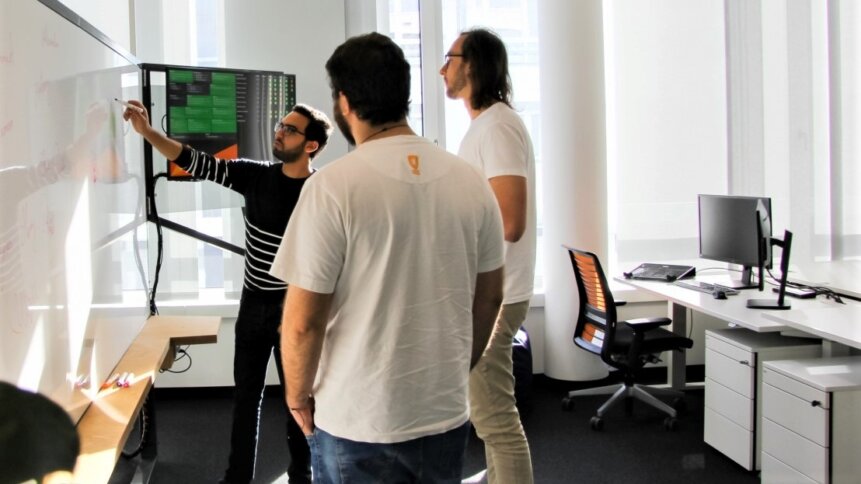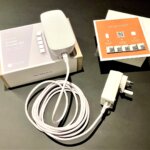Ways to mitigate supply chain risk in IoT

|
Getting your Trinity Audio player ready...
|
Typing ‘how to mitigate supply chain risk’ into Google returns plenty of hits, which points to the scale of the problem facing electronics firms – including IoT device developers – grappling chip shortages. And while there’s plenty of discussion on the topic, much of it centering on whether reshoring will or won’t solve the semiconductor crisis, companies are looking for actionable steps that they can take today. The good news for device makers is that finding ways to mitigate supply chain risk in IoT doesn’t have to mean wading through a stack of supplier data.
Instead, by choosing the right design solution, IoT developers and other electronics manufacturers can design for availability automatically, thanks to software linked to supplier stock levels. What’s more, if the tool – which comes pre-built with digital twins of popular electronic component modules – notices an availability issue, it can recommend an alternative design.
Streamlining the electronics design journey
The software, which is developed by German deep tech firm, CELUS, offers a radical re-think on the way that electronics, such as IoT products, are designed. Frustrated by how hardware design tools lacked many of the smarts of software creation products, Tobias Pohl co-founded CELUS with his brother, Alexander, in the startup-friendly city of Munich. And their goal was to accelerate and simplify electronics design.
READ NEXT

AI digests supply chain risk
Conventionally, the creation of a new product begins with what is sometimes termed a ‘napkin sketch’, which maps out the functionality of the design concept. From there, developers will think about hardware requirements, moving on to architecture design and parts selection. “It’s a trial and error process that can take anywhere from a couple of days to a couple of months,” Matthijs von Witte, Commercial Director at CELUS, told TechHQ.
Along the way, product developers could encounter pitfalls that force the team to re-work their design. “The hardware designer may have picked components that now have a 50-week lead time, for example,” comments von Witte. “And there may be a new component that’s available, but it’s not been selected.”
Drag-and-drop design blocks
To side-step these issues and help moderate events following the napkin sketch, CELUS’ AI-powered tools abstract the vast amount of component information that’s available, including data sheets. And the result is a collection of pre-built modules that can be dragged and dropped to create the desired functionality.
The system enable teams to quickly explore design variations – for example, to find ways to mitigate supply chain risk in IoT products or generate hardware that meets different price points. And in some cases, these lowest-hierarchy-level design blocks – which CELUS dubs ‘Cubos’, after the Spanish word for cube or bucket – can even help on the software side too.
CELUS recently teamed up with UK-based Cascoda, which supplies low-power radio devices for IoT applications, to develop a series of CUBOS that include firmware details on top of existing data fields. Using the modules, engineers were able to create a fully automated firmware stack – integrating system design, component/BOM selection, and hardware layout – at what they described as ‘lightning speed’.
Von Witte believes that, in the future, it’ll be commonplace to find design block information alongside component datasheets, making it even easier for hardware developers to quickly work up electronics designs. To further extend the design database, users can create and add their own Cubos elements alongside the prebuilt offerings. This makes it much easier for a company to capitalize on hardware expertise throughout its organization. And the setup encourages developers to re-use popular modules.
Rapid prototyping
“Experienced hardware designers will already have a mental model of these building blocks,” von Witte points out. “And you don’t need many Cubos before you are able to make numerous product variations.” He notes that firms tend to put the time savings of design automation to use in being able to conduct many more experiments. And this is where the human element comes in, adding industry experience and market knowledge to machine-generated design suggestions.
Once users have made their way through design, hardware, BOM, and board shape canvases, the software rapidly generates a series of project files (showing circuit schematics, component layout, and BOM). In the final step, clients can take this information and complete their product specifications in any commercially available EDA environment, ready for manufacturing.
To further develop its engineering platform, CELUS recently raised EURO 25 million in Series A funding round led by Earlybird Venture Capital, with participation from 2xN Venture, DI Capital, and existing backers Speedinvest and Plug and Play. “The investment is a great endorsement of our story and vision,” said von Witte.
CELUS also benefits from some big-name experience on its advisory board, which includes Sir John Rose (former CEO of Rolls Royce), Sir Peter Bonfield (Chairman of TSMC and NXP), Carl-Peter Forster (CEO of Opel, GM Europe, and TataMotors), Paul Gojenola (Electronic Engineering Lead at Google), and Martina Koederitz (former CEO of IBM Germany and DACH).
The availability of automated electronics design tools coupled with a wealth of industry experience will be encouraging to anyone searching for ways to mitigate supply chain risk in IoT.








